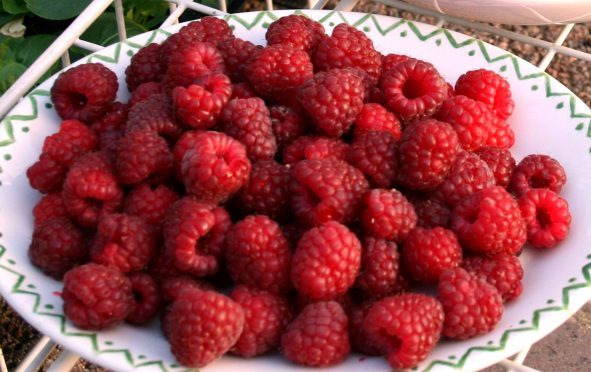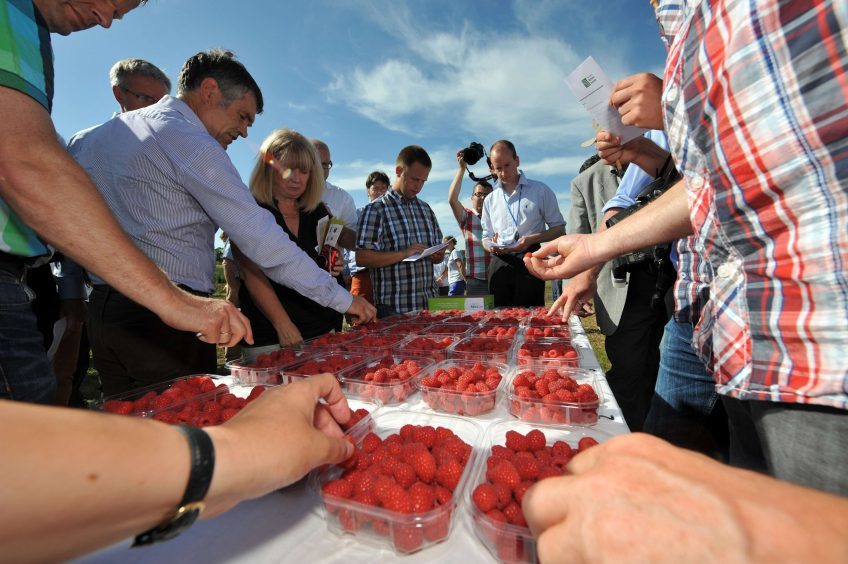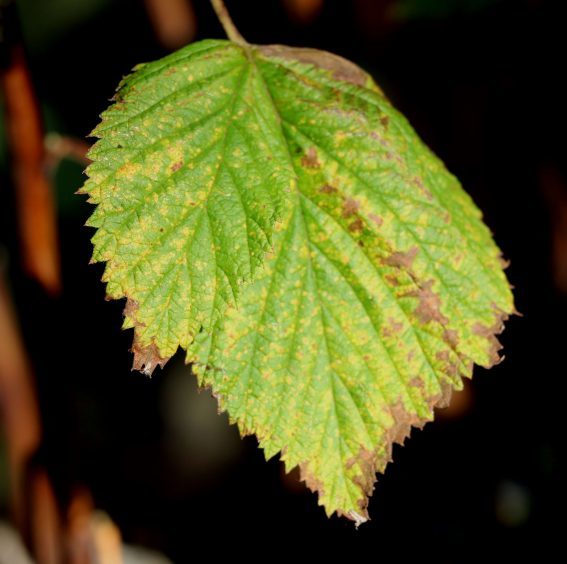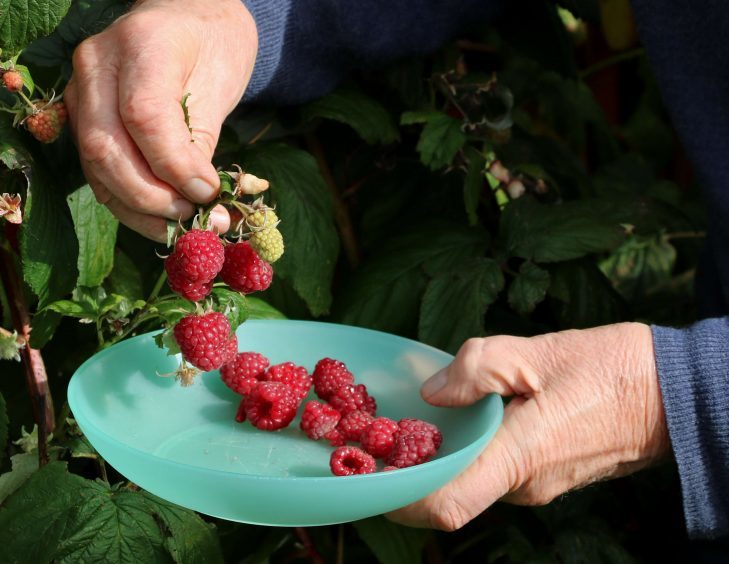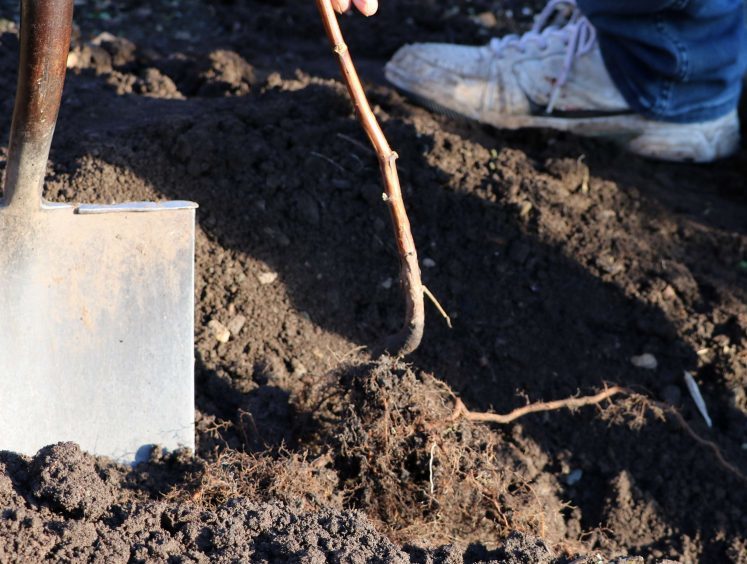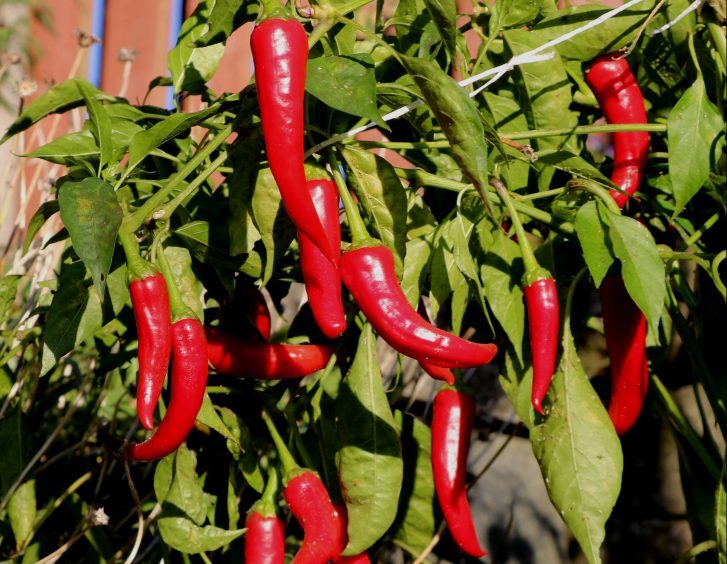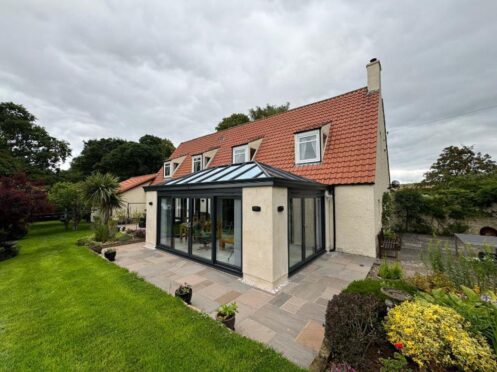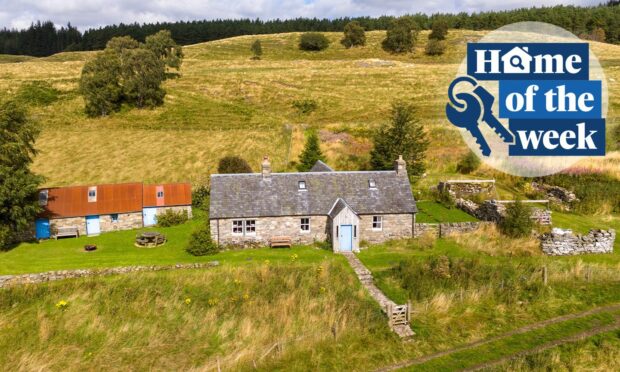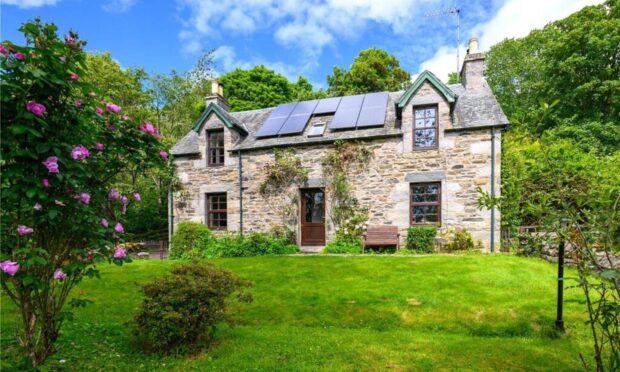My first experience of fresh raspberries goes back to the early fifties as this wee scruffy lad joined a band of other kids from the new housing estate St. Mary’s and headed into the countryside to pick some berries for which we would get paid a hefty price of a half penny for every pound picked.
Pickers came from Dundee, surrounding villages and many travellers.
Most of us got a few berries to take home for jam. Summer berry picking stayed with me till I was old enough to get a full time job on leaving school, but the pleasures of the berry fields never left me so my garden always had a row of raspberries as well as some strawberries.
At first it was the tall Norfolk Giant variety, but then along came Malling Jewel as an excellent main crop with a heavy yield.
As time went on these were replaced with the very popular Glen Ample but then as climate changed and summers got wetter raspberries began to suffer the root rotting disease, phytophthora.
This event changed everything.
The east of Scotland had the perfect climate and soils for outdoor raspberry growing, but root rot was spreading rapidly so changes were needed.
Initially it was the custom to plant canes on the top of ridges to help drainage, but now raspberries are grown in large pots under polythene tunnels with automatic drip irrigation.
It was recognised that the older varieties were very prone to root rots so a breeding programme was started to find more resistant varieties for commercial growers.
Raspberries were so popular that it seemed sensible to extend the season by bringing in early varieties under tunnels as well as autumn fruiting varieties to have fruit well into October or even November in a good year.
Autumn Bliss has had a great run for over ten years but now newer varieties such as Polka and Autumn Treasure give us far bigger fruits and picking made easier as the canes have no spines.
These autumn fruiting varieties also seem to be less affected by root rots and yellow rust so assist breeding better varieties.
However it is not just about disease and larger fruit as flavour is just as important before a new variety is released.
Glen Fyne and Glen Dee have good berry size, good disease resistance and excellent flavour, so are perfect for home gardeners as well as commercial growers.
Raspberries are still grown in rows in the garden, but make sure the ground is well drained.
As they will be left for ten years or so, it is worthwhile double digging a metre wide strip along the row, incorporating plenty compost to both subsoil and top soil.
Plant the canes in the dormant season, about one to two feet apart and give a dressing of fertiliser to get them started.
They will need strong posts with two wires to attach the canes to once they are two years old.
Summer fruiting raspberries fruit on canes produced the previous year, then in winter these are cut out and the new canes tied in with a running knot to prevent the canes moving in windy conditions.
Autumn fruiting varieties fruit on canes grown the same year, so after harvesting these canes are totally removed and fresh canes will grow the following spring.
Main pest is raspberry beetle maggots that mainly affect summer fruiting varieties, but sprays and hormone traps are available.
The main disease of root rots affects older varieties so use disease resistant types. Raspberry yellow rust can also be devastating on some varieties, though newer varieties have some tolerance.
If the rust is not too severe remove affected leaves in spring and burn them.
Wee jobs to do this week
Pick pepper De Cayenne as the season is now over.
They can be stored for a few weeks in the fridge or washed, sliced removing the seeds and dried off for the freezer.
This chilli is quite hot so be careful and use sparingly, though the health benefits of these hot chillies are very impressive having vitamins A, B, C and E and the minerals potassium and manganese.
Hot peppers boost metabolism, circulation and blood flow and is said to increase energy levels with beneficial long term weight loss.
